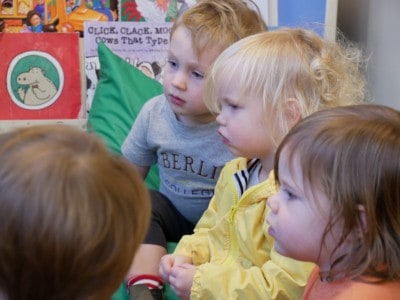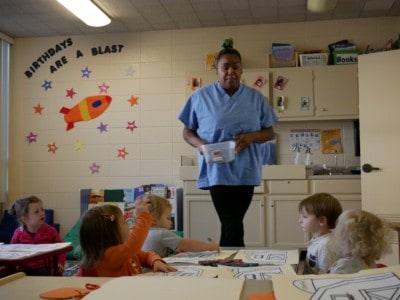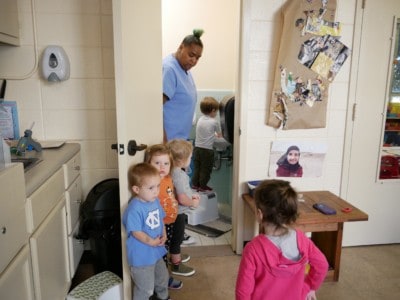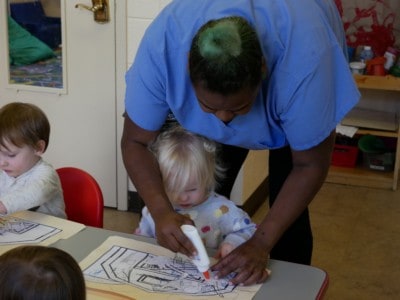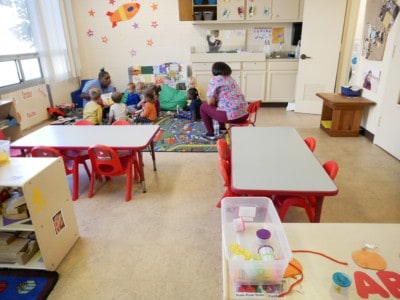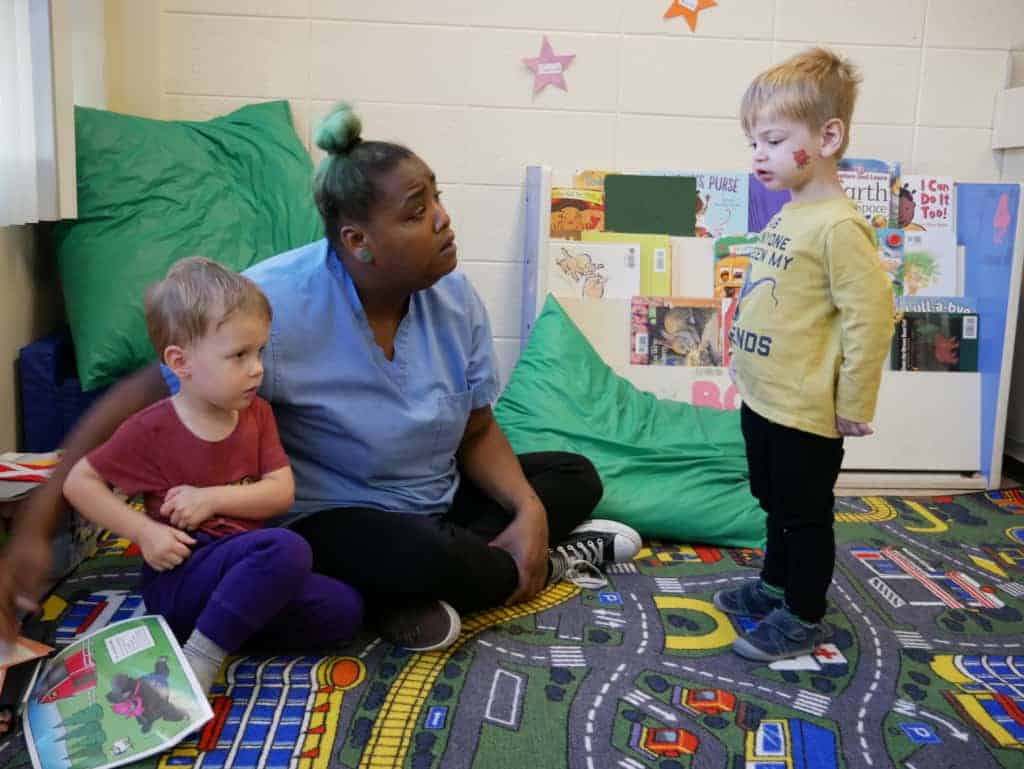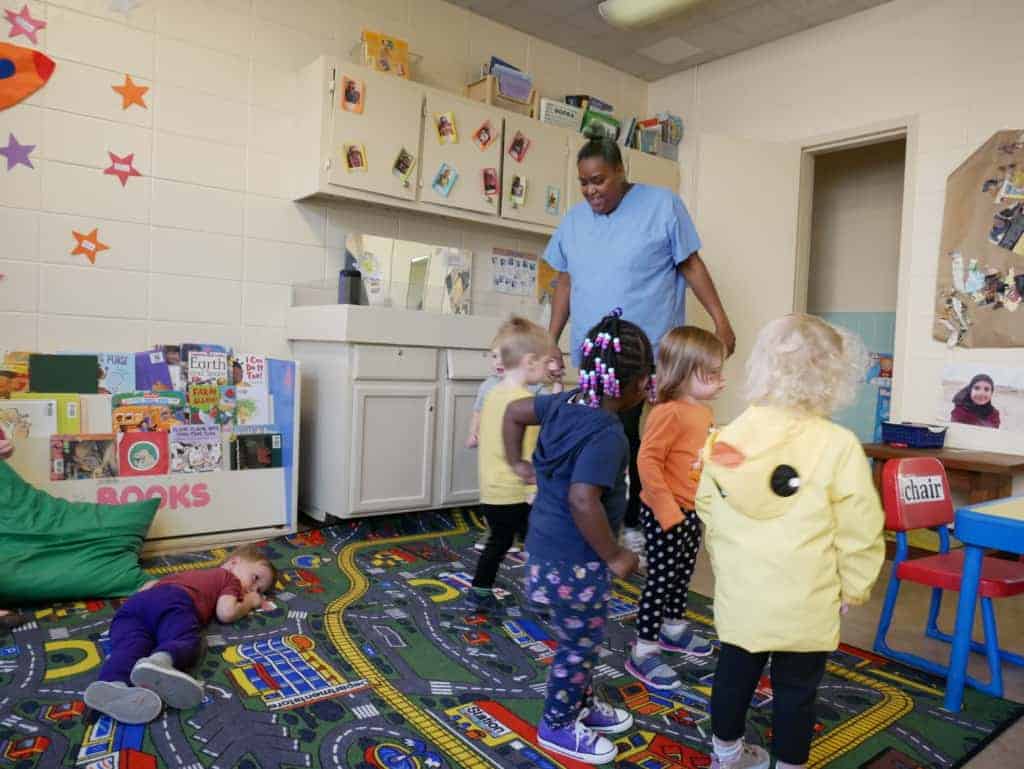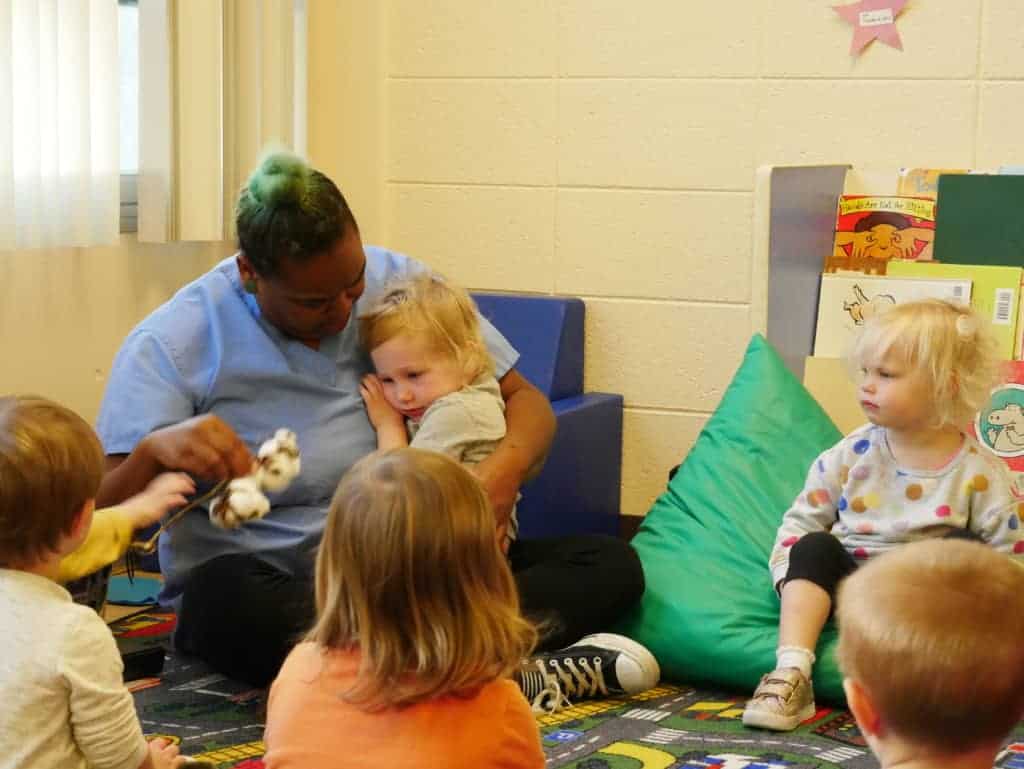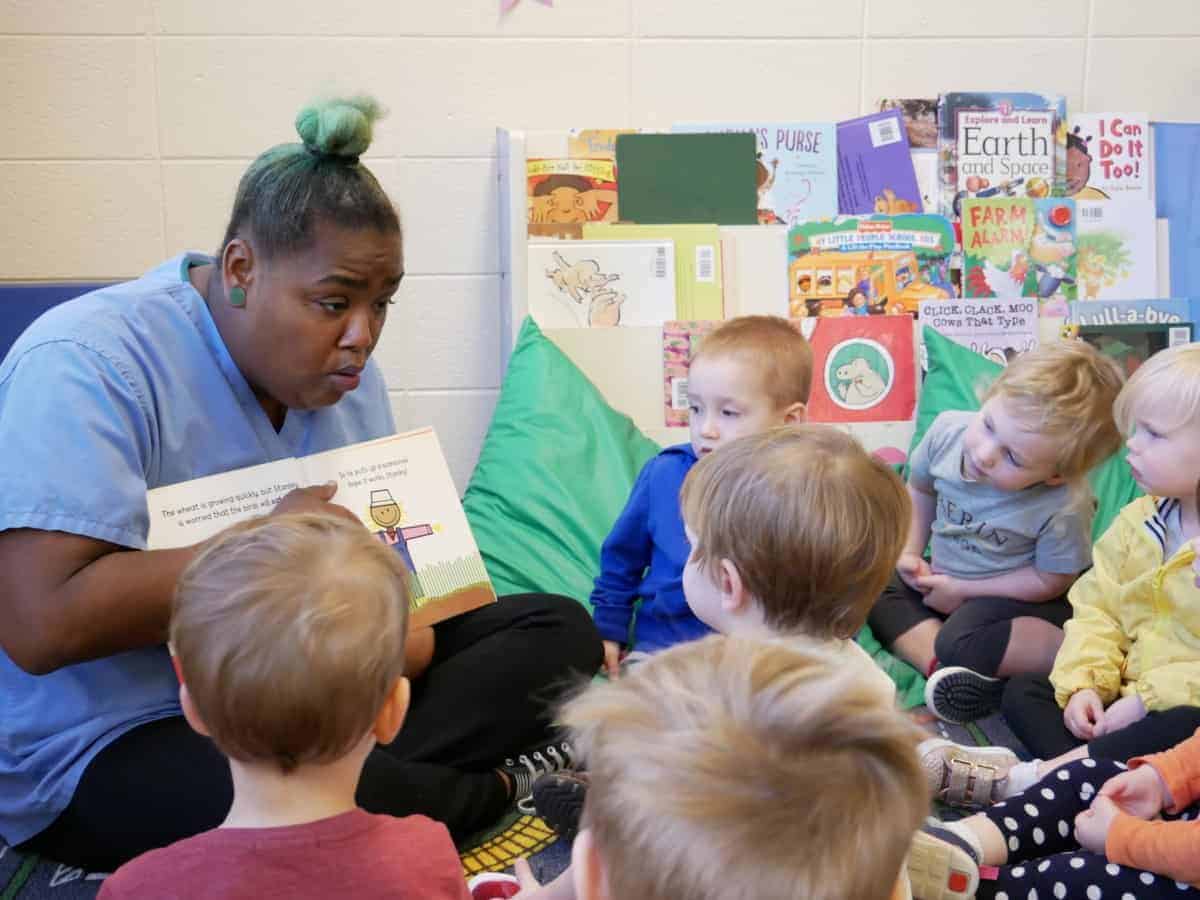

When Shari Johnson decided she wanted to go back to school and pursue early childhood education, she was working at Wendy’s and making minimum wage. Inspired to go into education by her family of educators and her love for young children, she decided to take out loans to pay for tuition and books.
Johnson kept working while she earned her associate degree at Durham Technical Community College. As she switched from her part-time job to a full-time position teaching infants and toddlers in Durham, North Carolina, she took no more than two courses each semester, trying to balance her 40-hour workweeks with her studies. It took her five years to get her degree.
“I could not go full time” at Durham Tech, Johnson said. “I had to work and go to school.”
Like Johnson, two out of three community college students throughout the country work while attending school, according to the American Association of Community Colleges. And nearly one-third of community college students in the 2015-16 school year were working full-time.
Johnson has her dream job, she said — caring for infants and toddlers at First Presbyterian Day School. She has been there since her first semester at Durham Tech.
“This right here is me,” Johnson said with an infant on her lap while her 2-year-old students napped on cots down the hallway. “Early childhood is me. Infants, toddlers, and twos, that’s me. … Until I’m just too old to be in the classroom, I don’t see myself being in anything besides early childhood classrooms.”
But when Johnson started as an assistant toddler teacher, she said, she was making about $8.50 an hour — only a dollar more than her pay at Wendy’s.
“It was because it was my first year starting off and I (was) still in school,” she said. “… At the same time, who can live off of that?”
Johnson was given raises as she moved to a lead position at the end of 2017 with her employer’s expectation that she would finish her degree. She graduated in May and now makes $13.76 an hour. That comes out to about $550 a week, compared with the median weekly wage of Americans with associate degrees of $862.
Still, Johnson’s hourly wage is more than three dollars better than the median hourly wage for child care workers in North Carolina of $10.35, according to the Bureau of Labor Statistics. The nationwide median is $11.17.
Low pay can keep early educators across the state and country from more education, more economic mobility, and more effectiveness in the classroom. Research says higher education means more effective care and teaching, but many prospective teachers struggle with the cost of postsecondary education. Early educators across the state and country are usually paid significantly less than elementary school teachers and, in some cases, are better off financially if they work in service or retail jobs. A 2016 report from the Center for the Study of Child Care Employment found that 46% of child care workers nationally were part of families relying on some form of public assistance.
For those caring for children during the most rapid years of brain development — the first couple years of life — the pay is even lower.
“Baby and toddler teachers typically make less, they typically have lower levels of education, they typically turn over or say they’re going to leave at faster rates than the rest of the teaching population,” said Sue Russell, executive director of T.E.A.C.H. Early Childhood National Center, which provides financial support for early educators striving to continue their education.
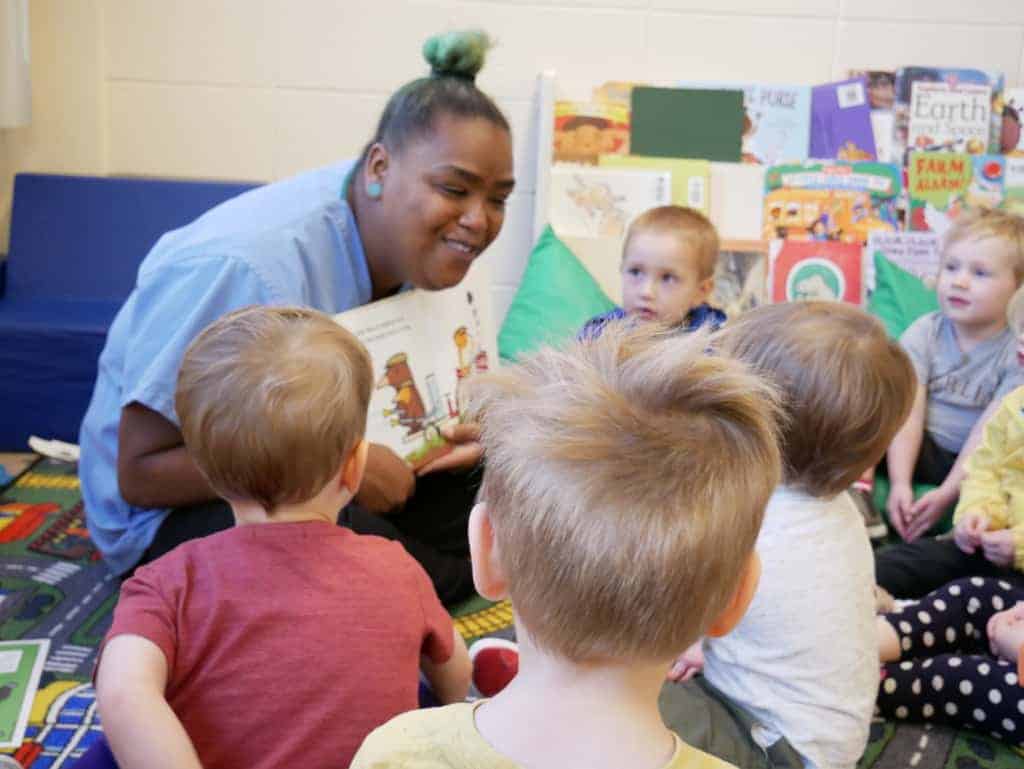

“I was really lucky to get this job,” Johnson said. Presbyterian Day, which earns five out of five stars on the state’s child care rating system, is committed to paying teachers more as they increase their education, and provides teachers with medical and dental benefits.
For many others across the early educator workforce, that’s not a reality. In a 2015 Child Care Services Association workforce study, only 19% of licensed child care providers across the state covered the full cost of health insurance. More than half provided no health care coverage at all.
“The term ‘babysitting’ I think we still hear often with [teachers of] infants and toddlers, and we need to figure out how to get rid of that term altogether,” said Cathy Collie-Robinson, head of the early childhood program at Durham Tech and one of Johnson’s former instructors. “… We really do need to figure out the compensation component quickly.”
Even in a ‘lucky’ position, Johnson said working and going to school takes time, finances, and knowing your personal limits.
“That’s what took me so long at Durham Tech,” she said. “I can’t just not work and go to school.”
Although awareness of the importance of high-quality early care and education is increasing, pay and respect for the workforce lags. In North Carolina, the only state requirement to work in private child care is one community college course.
“There’s this great awareness of the importance of the first five years of life,” Collie-Robinson said. “The science and information has been around for a very long time, but now we have everyone who is talking about it. … The more educated our teachers can be working with children in those most critical years, the better the outcomes will be for children. … It is a struggle to have a higher minimum requirement but not options for increased salaries.”
Johnson said she was taking a break from school at North Carolina Central University when she decided to return to school. She previously studied secondary education but struggled in a large university setting. Johnson said she thought a community college, with more individualized attention from professors, would push her to succeed.
“Community college is what brought me back,” she said. “Durham Tech was what set the stone.”
This time, she knew she had to go for early childhood. Her weekends were often filled with caring for young children for family and friends — sometimes up to six at once.
“I just sat back and was like, ‘I really love the younger child and how much joy they bring in my life,'” Johnson said.
Johnson said she has built uniquely strong relationships with the children and families in her class because the school “loops,” meaning a lead and assistant teacher stay with children from infancy to two years old. She has known many of the children in her classroom since they were six weeks old. Though she loves her two-year-old classroom, she said she especially connects with infants, like the one she holds in her lap and who is calm and content. “Even an infant will tell you if they’re comfortable or not,” she said. “They have emotions to be able to share with you.”
She has spent her first five years going back to school and working, during which she has fallen in love with her job and her students. She said during weekends, she is usually ready to return to her “friends” by Sunday. “I live for this job,” she said. It is emotionally and physically taxing work. A 2015 study of the workforce found 30% of center-based staff and directors experienced depressive symptoms. A recent North Carolina postsecondary training focused on how to understand and cope with the emotionally-draining work of early childhood education.
But for now, Johnson said she never takes vacation and never wants to. “The only reason why I’m tired is because I’m a night owl and I don’t go to sleep,” she said.
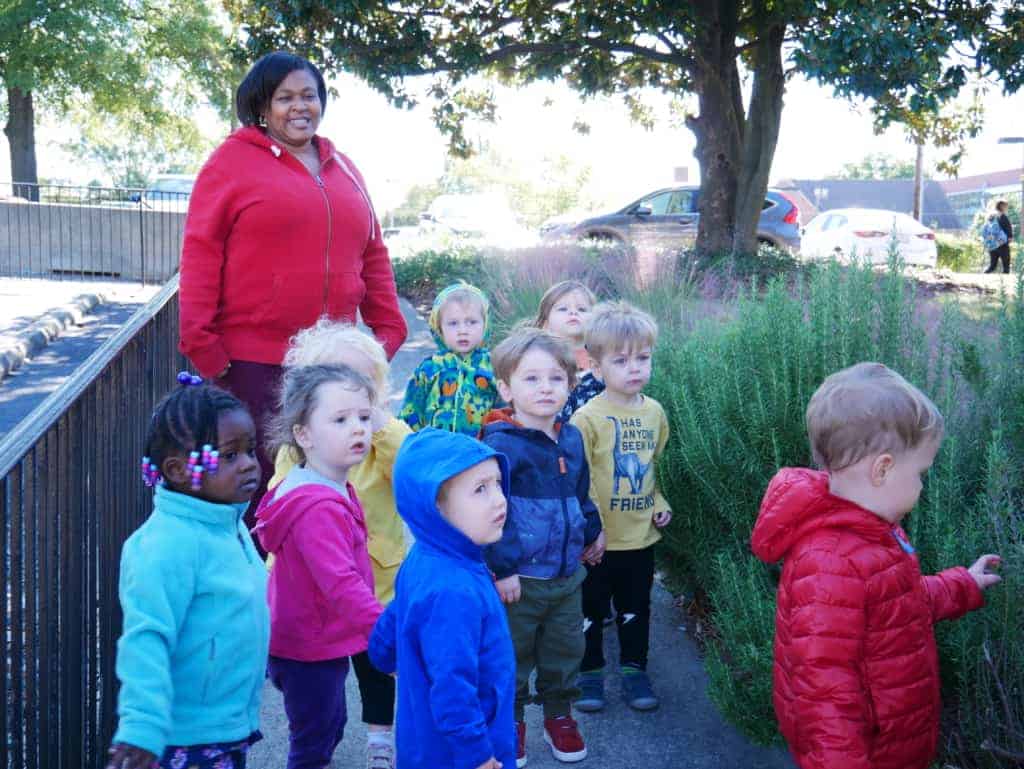

Johnson will soon start an online program at The University of North Carolina at Greensboro to earn her bachelor’s degree. She said she is taking out loans once again to pay for tuition. She wants to ensure she has the options that a four-year degree will bring later in life. Many of her colleagues, she said, are still doing this work in their 50s and later.
“It can wear and tear your body,” Johnson said. “It can wear you down.”
She said her fellow educators at Presbyterian Day supported her journey through community college and will continue to help with homework and questions moving forward.
“It wasn’t too overwhelming because everyone that I work with currently is either in school, finishing school, or have already graduated,” Johnson said. “We worked together.”
Johnson benefits from WAGE$ NC, another program from the T.E.A.C.H. center, which pays early educators stipends to incentivize both retention and higher education. “The more education you have, the bigger the check,” Russell said. Johnson said she gets two $1,000 stipends a year.
“Do we reach parity? No,” Russell said, referring to elementary school teacher pay. “Are they getting paid what they should be paid? No. But it’s an incremental step. It brings some level of economic relief.”
The daily work is complex and makes a difference in children’s development, Collie-Robinson said. “Everything that’s going on in the first three years of life is setting the foundation for the rest of this child’s life,” she said.
Johnson spends time at the end of each day documenting specifics of each of her students’ development, paying attention to big milestones and small details.
“I can never stress that it is so important to find those milestones out in early childhood because when you get to public school, that’s when the label comes,” Johnson said. “That’s when the ADD and the ADHD come, and that’s when the behavior is out of control. If you stop it now, or handle it now, we can probably have less children going home or less children having behavior problems.”
Helping children learn how to express their emotions is a huge part of Johnson’s jobs. Whether those children have those skills, she said, is often noticeable once children enter the public school system in kindergarten. When a student is upset or frustrated, Johnson never denies the child’s emotional experience by saying, “It’s ok.”
“You can’t say that you’re ok, you can’t say that you’re fine if you’re crying or upset,” Johnson said. “Let’s talk about why you’re upset. Let’s express what it is or what happened for you to feel this way.”
When these children were infants, she would place them in front of a mirror in the classroom so they could start to acknowledge their emotions. Now that they’re two years old, she often still encourages them to go look in the mirror.
“We would definitely say, let’s go look at ourselves and see how we’re feeling,” she said. “Go look at your face, and see those tears going out of your face.”
Whether during circle time in the morning, where Johnson fits in curricular content like counting to 20 and animal sounds, or while she oversees students as they play in centers designed for exploratory learning, Johnson spends a lot of time acknowledging individual students. One student is tired an hour before nap time, so she lets him lie down while others dance around before lunch. One student is upset he didn’t get enough time feeling a piece of cotton, so she hugs him and lets him return to the cotton. Two students are fighting over sitting on a pillow while she reads to them, so she eventually takes away the pillow. There are constant small conflicts to resolve. Johnson is never sarcastic and never shows frustration.
“Children know when something is wrong,” she said. “Children know when you’re having a bad day. Children know when you and your coworker are not getting along.”
Johnson is proud of her students for how far they can count (almost to 25), that they know a stop sign is called an octagon with eight sides, and that they are developing individual personalities. Next year, they will move onto the three-year-old classroom and Johnson will begin again with a new cohort of infants. Leaving the students and families that have become her own, Johnson said, will be difficult.
“I might cry the entire week that it’s our last.”
This is the second piece in a series on challenges facing community college students titled: An Extra Hill to Climb. The series is a partnership between EdNC.org and Spotlight on Poverty and Opportunity. Spotlight is a non-partisan initiative that gathers diverse perspectives to tell compelling stories illustrating the economic hardship confronting millions of Americans and to lift up genuine solutions. EdNC.org and Spotlight partnered to illustrate the challenges facing many community college students by telling stories from North Carolina and sharing data on the broader challenges in the United States.


